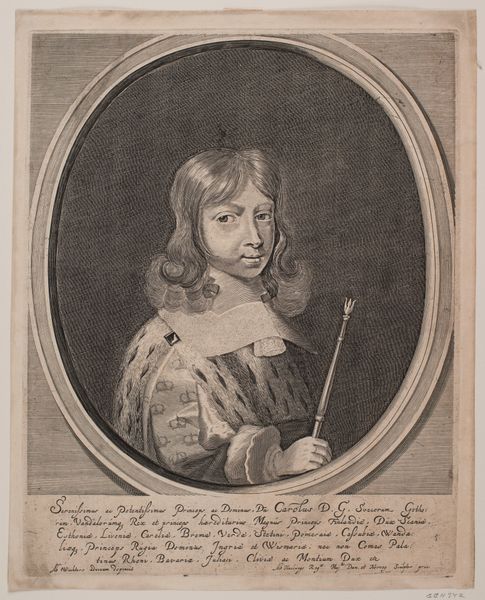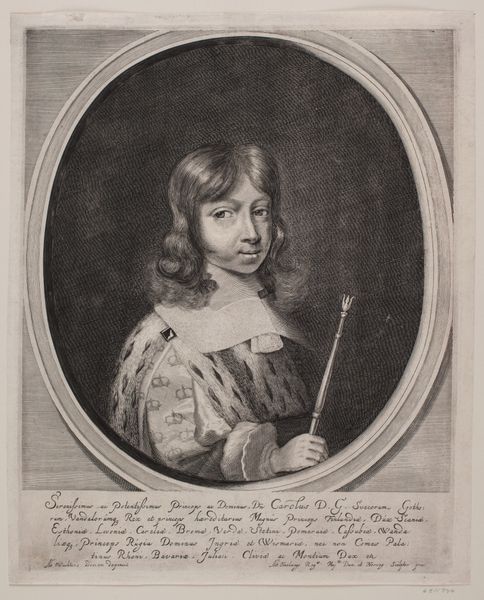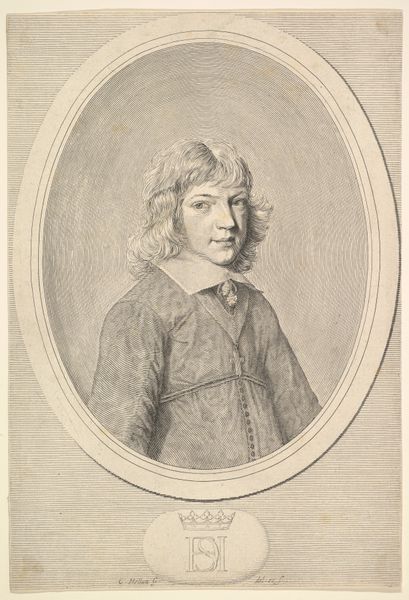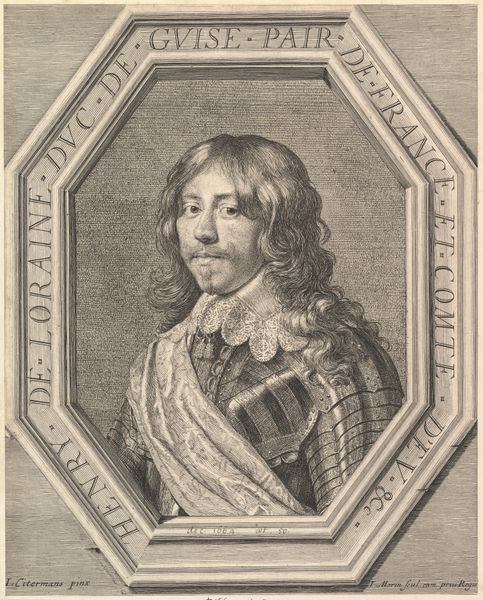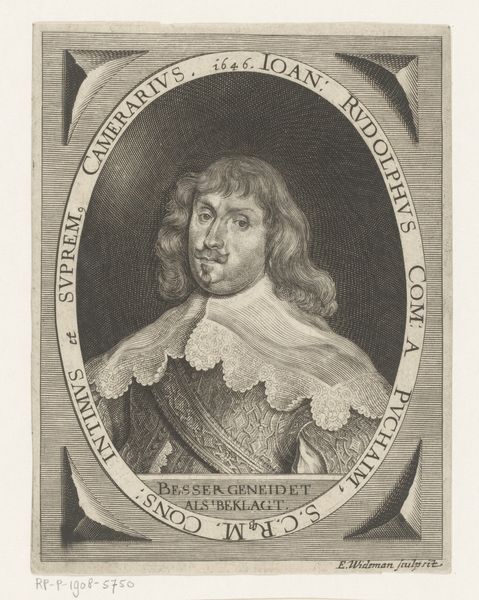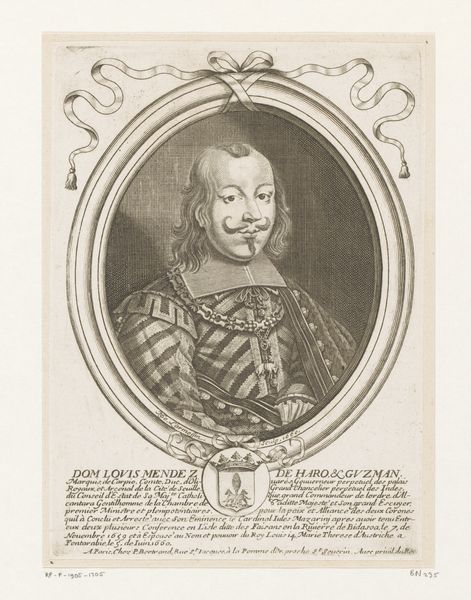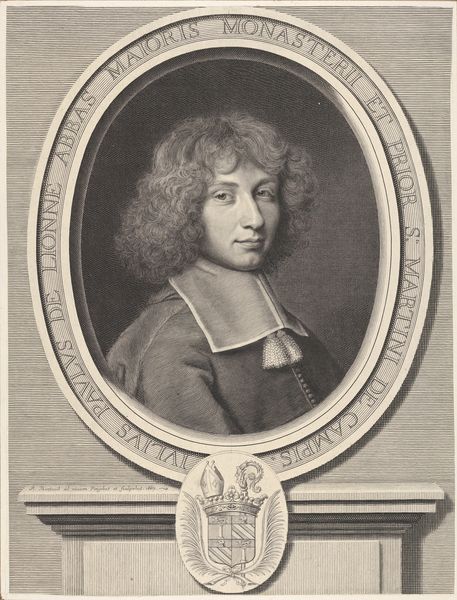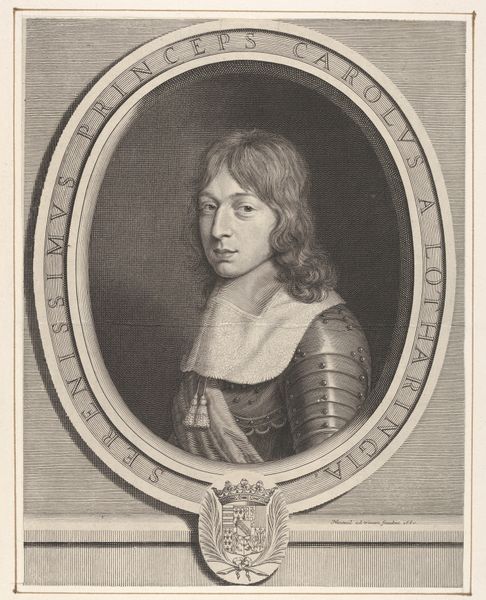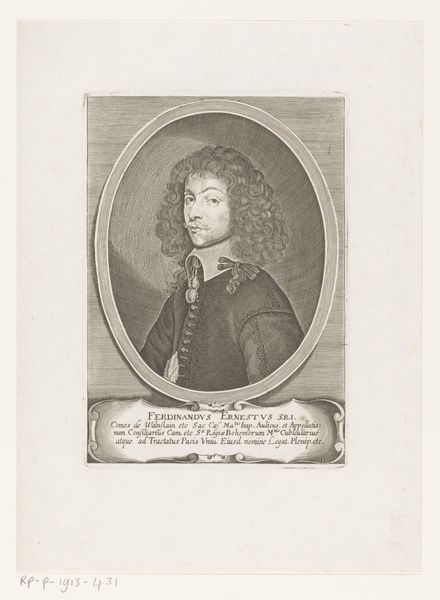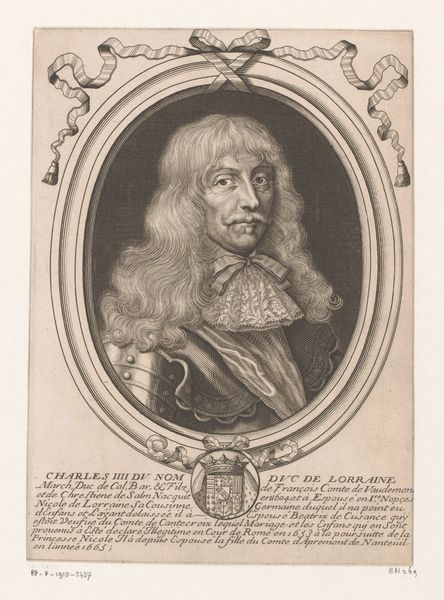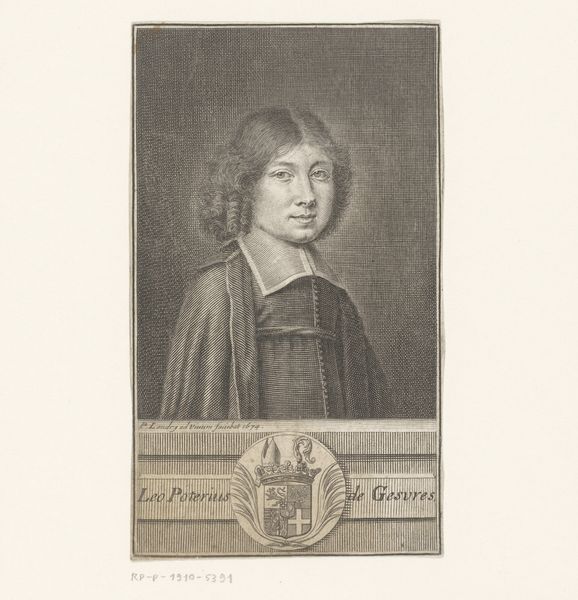
print, engraving
#
portrait
#
baroque
# print
#
figuration
#
line
#
portrait drawing
#
history-painting
#
academic-art
#
engraving
Dimensions: 347 mm (height) x 247 mm (width) (plademaal)
Curator: This engraving, "Carl XI," made between 1659 and 1663 by Albert Haelwegh, is quite striking, isn't it? The linear quality gives it a certain starkness, despite the opulent attire of the young king. I’m immediately drawn to the contrasting textures and how they were achieved with the limitations of the print medium. What jumps out at you? Editor: The detail is amazing! I mean, it’s a portrait, but not like a painting; you can really see the lines. What can you tell me about it? Curator: I find myself considering the production of this image. Engravings, like this one, involved significant labor. The material – the metal plate, the tools, the ink – all had a specific cost and required specialized knowledge to manipulate. We see here a portrait not as an exclusive item for the elite but rather one designed for broader distribution. This wasn't just about depicting Carl XI; it was about constructing his image, and projecting power through the relatively reproducible medium of print. Editor: So, you're saying it's about *how* the image was made, as much as who it's of? Curator: Precisely. Consider the engraver's skill. The lines create the illusion of depth and texture. He is, in essence, crafting not just an image, but a political statement intended for wider consumption, making him a vital collaborator. How do you see the choice of engraving influencing the reception of the artwork? Editor: I hadn’t thought about it that way. I suppose using a print means it could reach more people and solidify Carl XI's image and authority through repetition and distribution. Curator: Exactly! It highlights the intersection of artistic skill, political power, and the burgeoning culture of image reproduction. The piece’s materiality connects directly to the social context. What does it tell you about our understanding of art history? Editor: I guess it forces us to think beyond the surface and consider who had access, who made it, and how it was consumed, not just who's in the portrait. Thanks! Curator: Indeed, a materialist perspective challenges us to see beyond the purely aesthetic and engage with the broader socio-economic forces shaping the artwork. A lens that’s very useful in looking at art history.
Comments
No comments
Be the first to comment and join the conversation on the ultimate creative platform.
